In 1979, the inflation rate was 11.35%. The prime lending rate slowly rose from just over 11% to 15.5 % in the latter half of the year. A gallon of gasoline was $0.88, which would be equivalent to $3.82 today. This was the unenviable market that Chrysler was struggling to sell an outdated fleet of automobiles, and this dismal economic environment was one of the contributing factors to the company securing a 1.5 billion dollar loan in a desperate attempt at survival. Did they deserve to go bankrupt based on the cars they produced, or was the company the victim of circumstances? Is the truth somewhere in the middle? Would you be interested in owning a Chrysler from this era to decide for yourself? If so, this 1979 Chrysler New Yorker for sale on Craigslist in North Olmstead, Ohio may be one of the nicest examples in the Midwest. With 61,500 miles on the odometer and fresh out of 10 years of storage, this king-size cream puff is being offered at $7,900. Thanks to Tony P. for the awesome tip!
Much has been written about Lee Iacocca, the K-car, and the miraculous revival of The Chrysler Corporation in the early 1980s. However, the story of the fabled automaker’s decline started much earlier. Chrysler attempted to compete with its larger competitors by diversifying into the defense and aerospace industries, even winning the contract to produce the new M-1 tank and contributing to the space program. This expansion caused the company to take on debt that was later downgraded when the economy began to suffer in the seventies. During that decade, there were three recessions and two full-blown energy crises that decimated Chrysler’s automobile and truck sales. The company was also heavily invested in the production of large, rear wheel drive vehicles when the public was moving towards more fuel-efficient vehicles. It didn’t help that the government was making life difficult for all of the automakers by aggressively pursuing more stringent safety and emissions standards.
It didn’t take a rocket surgeon to see that Chrysler was not going to survive much longer. If the tank contract had not happened, it is possible that the U.S. government would have turned a blind eye to the company’s pleas for help. We were deep into the Cold War at the time, and the prospect of any disruption to tank production was unacceptable. Couple that with the certain massive spike in unemployment for both employees of Chrysler, the dealerships, and the suppliers along with the loss of manufacturing capability, it is easy to see why the government stepped in. The downstream costs of such a massive bankruptcy would have been far higher than $1.5 billion. A loan was made, Chrysler got some breathing room to develop a line of cars better suited to the American market, and the economy had a chance to improve in the meantime.
If you want to get an idea of the cars Chrysler was hawking during that dark period, this 1979 New Yorker Fifth Avenue edition is a well-preserved example of the company’s upper-end luxury cars at that time. The seller tells us that this car has recently been purchased from the estate of the original owner. It was off the road for ten long years, and it looks like it was stored properly during that time. The paint still holds a good shine, and the condition of the interior is also consistent with a vehicle kept away from the elements.
A close look at the pictures will show that the claim of having just 61,500 miles is certain to be true. All of the usual luxury car features of the era are there. We can see that the car is equipped with power steering, power brakes, power door locks, power windows, cruise control, tilt steering, and a leather interior. It also comes with an 8-track tape player and an AM/FM stereo. Many of these options were part of the top-of-the-line Fifth Avenue package.
We aren’t given any information on what is under the hood. Chances are it is either a 318 or an optional 360 cubic inch Chrysler V-8 that is certainly backed up by a Torque Flight automatic transmission and a limited-slip differential. Performance on these cars could charitably be called leisurely. The curb weight of an average New Yorker strained the scales at 3,810 lbs, and the emissions-choked V-8 could be counted on to swallow exponentially more fuel as drivers pushed harder on the pedal to get the heavy car up to speed. The Lean Burn ignition systems of the era also suffered occasional reliability problems. The red box on the firewall in the picture below that sits next to the “brain” for the ignition may be an aftermarket addition to help. Can anyone identify this part?
In all, New Yorkers of this era weren’t bad cars. They were comparable to offerings from Ford and GM at the time. The issue is that Chrysler showrooms and storage lots overflowed with cars like this at a time when Toyotas and Volkswagens were flying out the doors due to their perceived better build quality and their very real fuel efficiency. We look back today and wonder why everyone didn’t love a land barge like this back then. If you were trying to feed your family or keep a business alive in a rough economy, the last thing you needed was a thirsty V-8 in a heavy car to add to your troubles. It wasn’t called the malaise-era for nothing.
Do you remember 1979? Have you ever owned a Chrysler product from this era? What were your opinions of the car and the times? Please share your opinions in the comments.
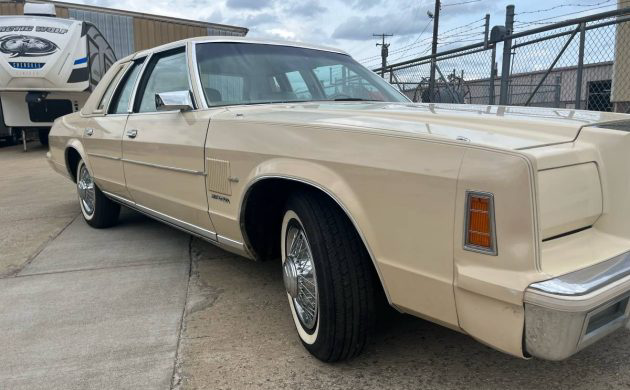
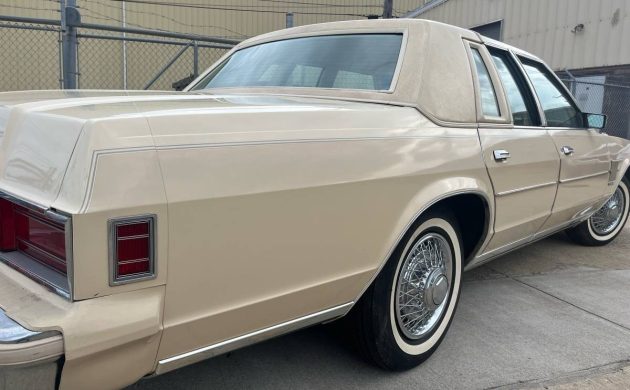

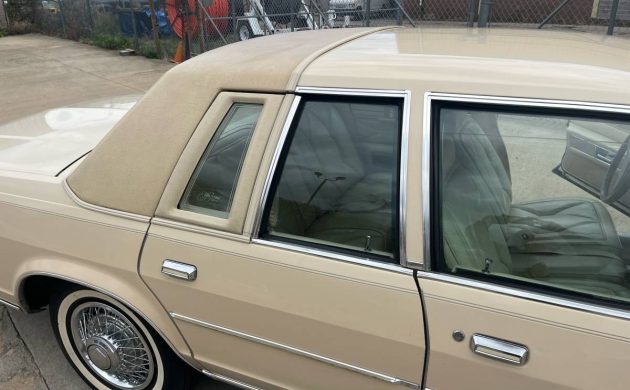
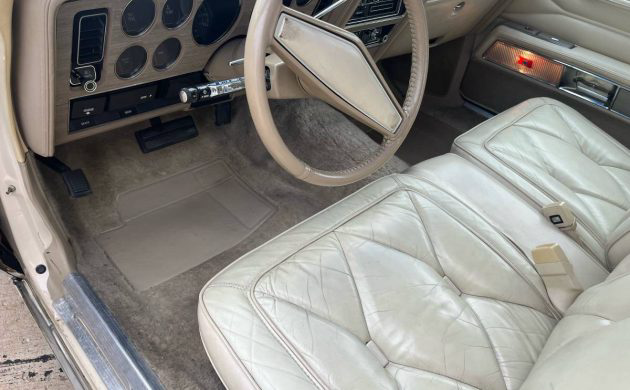
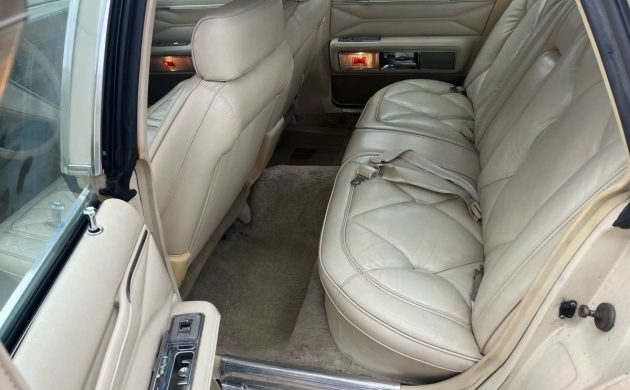


I was a HS sophomore in 1979. My dad was a union carpenter and my mom an RN. They did pretty well in 1979 since casinos were being built in Atlantic City and dad put in a ton of overtime. Dad traded in his 1970 Dodge Monaco in 1977 for a VW bus and mom had a 1976 Dodge Aspen coupe. These were purely practical cars for the jobs they did. Dad was tall so he really liked big cars but that VW was roomier than anything American for the price. Sadly the Aspen rusted out by 1980. I really was hoping that would be my first because it was a really good looking car. It was a great time to grow up in Ocean City NJ but maybe not so much in many parts of the country.
Rocket surgeon. LOLOL!!!!
So many people regretted buying a late 70s Mopar.
This is a really great write up and history lesson Jeff. Thank you , I learned a lot. I was 9 when this was built. And even as a 9 year old in the late 70s, I knew that Chrysler was having trouble. I have no clue why I knew this at such a young age, maybe listening to the grownups surrounding me. But I do remember they were really struggling during that time. I didnt know about the government contracts, I tell you, I always learn something new on here every day.
That being said, this old New Yorker must have been somebodys baby. It does look well preserved and hope it stays that way.
As for the firewall. Im not certain, but It sure looks like an older style ballast resistor next to the little orange box mounted there. I think people used to do away with the troublesome Lean Burn systems and use the older style instead. Hopefully someone a little more knowledgeable can shed some light on it.
So I’m willing to hazard that the orange box is in fact the electronic ignition module and it’s orange b/c it’s a replacement – just a guess on the color issue.
I’ve had 2 mopars w/ Electronic lean burn – they were both AOK PROVIDED the sensors were properly plugged in and sending the correct info to the lean burn component – which if memory serves me was made by RCA (“the most trusted name in electronics” – their slogan at the time).
I add one thing to this narrative- and it’s important because I was there – these were “1.5B in Loan Guarantees” not an out right loan. Mopar was out of equity to borrow against. To secure further bank funding they went to Congress (and Prez Carter) for additional Equity to borrow against – hence “loan Guarantees” – As we know Lee – (one great man) paid the interest on the guarantees back in record time.
His quote “We borrow money the old fashioned way….we pay it back”
Amen.
This is really a beauty, from the days when luxury car meant actual luxury. I sure hope some buys this with the intent of preserving it.
Excellent write-up Jeff. It serves to remind us how the government was, and is, “in” the automakers’ business, which is good and bad I suppose. And for that matter, the opposite is true too. It also serves to remind us that we are car enthusiasts, and as such we wonder why the manufacturers did or didn’t do x, or did or didn’t offer y. There are boatloads of other factors in play we have no inkling or understanding of, such as Chrysler’s very survival at this point in time.
Back to the car– it looks nice. Assuming its mechanicals are in good shape, would make a fine cruiser for not much money.
In the Detroit area in the 1970’s you couldn’t escape news of the auto industry, even as a kid. All you knew is that Japan=bad, and the government=joy killers. It was in the air here. But there was a lot of bad attitude as well. There was a lot of looking down one’s nose at the Japanese products, and a lot of hubris. Certain cars were still good, like the higher end models from the big three. But then again, that’s not bread and butter. Circa 1977, my dad went to GM dealer (I can’t recall which one, probably Oldsmobile), and there was a car there, with a big chrome bumper, that had a casting defect, where it looked like a huge glob of weld on it. And they just chromed over it. My dad pointed it out to the salesman, who brushed it off, saying “Oh, someone will buy it…”
I don’t think that this car was particularly egregious in terms of being out of touch with 1979. It was pretty much the same as the other maker’s offerings.
I remember these cars, along with the St Regis, which Mass used as their state police cruisers. The lean burn computer adjusted the timing and carb mixture based on RPM, load, ambient temperature, engine temp, and a few other factors. The orange box may not have to do with the ignition system. I remember cars of this era having a box like this with three wires, I think it controlled the purge canister or some other part of the emissions system, hopefully someone else can offer a more definitive answer.
I had a 77 Monaco with a 318 and lean burn and that car flew. It died an ignoble death when a leaf spring came through the trunk due to rot. It is one of two experiences with lean burn. A friend recommended carrying a C-clamp as the lean burn computer’s board would delaminate and you could clamp it back together to get home. The police cruisers often mounted the computer under dash to keep it cool, and they lasted better. I had an 87 Gran Fury with this setup and never had an issue, but the car was a bit gutless.
Ahh the seventies. Not one of my favorite decades. First wife, disco, bad winters, I remember the white hurricane when I had to dig my carbureted Fairlane out of the snow and it wouldn’t start. Automatic chokes and flooding engines. You can complain about government regulations all you want but cars now a days are safer, cleaner, more economical, and better built. You might as well long for the days when you had to turn a crank to start a car. That said, it’s brain scientist, not rocket surgeon😆
A friend had one of these. Brand new. As I recall it was spacious and comfortable. But quantity was not good and somehow the overall body looked awkward. The following 80s RWD Fifth Avenues, IMO were the best revision of an existing platform. I had 83 and 85 Fifth Avenues. With formal styling, plush velvet interior, comfortable and elegant. The 318 gave enough power. Then Iacoca went loca 🤪 with Kcars! The final Imperials, New Yorkers, and Fifth Avenues based on Kcars were a sad end for these once storied Marques. I’ve often wished I had kept my last Fifth Avenue.
This car also comes with an 8-track tape player? Hot dang! I’ve found a way to play “The Hot Ones,” K-Tel’s collection of hits from 1978. It’s the only 8-track I still own from all those years ago. All I need to do now is buy this floaty boat and I can cruise in style!
These were good cars until the Lean Burn system started acting up. I’ve been through that on three Chryslers from this era. Once that happens, they
simply are not reliable unless you spend a lot of money replacing the carburetor and ignition system. No thanks. Been there, done that, too many times.
🚀 Rocket scientist, brain surgeon 🧠
That weight claim has to be way-off wrong! My Jeep Cherokee weighs in at a curb weight of 3700 lbs and is half the size of this beauty of a land yacht. Jeeps are purposely built as light-weight as possible to make it’s off-road abilities as good as it can be, which this mammoth cruiser has no interest in ever doing. So, what’s the real spec on that number? — Also, cars are designed and contracts for labor and parts are set in stone years in advance of manufacture, which can’t be suddenly scrapped without losing much more money than just going ahead and building the car. And so you have these beautiful luxury land yachts getting caught in the middle of the government doing everything they possibly could to destroy the market for them, which they did – for absolutely NO scientifically valid reason whatsoever – and thus we all got shoved into the market rush for much less cars for the money to choose from. You could now re-tune and modify this engine to perform much better with much higher gas mileage than it was able to offer brand new. — And the price for all this luxury and style is very reasonable too.
The weight is correct. The new R Bodies were 800 pounds lighter than the C bodies they replaced. The Rs made use of a lot of new- and unproven- lightweight materials including chrome painted aluminum bumpers (that had a tendency to peel), and lightweight brake calipers that used plastic pistons that warped. These were considered innovative at the time but led to a bunch of problems for these early models.
The orange box on the firewall is a replacement voltage regulator. The OEM regulator wasn’t so obvious, having a bare (probably anodized, actually) metallic finish, and more easily identified because they were plainly marked as the “ELECTRONIC VOLTAGE REGULATOR”.
I started to drive during this time. These cars were the epitome of plush. I recall one salesman saying something to the effect of it being “as comfortable as your living room sofa.” I kept thinking, “…yeah, and about as fast, too.” But I was just a kid back in those days, and cars were changing so rapidly it was hard to keep up. Still, this could be a nice change from the tin-can roller skates on the road these days, if you could afford to keep the tank filled…
Man, hadn’t seen one of these in a long time. Good write up on this car. I liked this New Yorker when they came out. Looks like a nice example. Good info on this car. Good luck to the seller and buyer.
The red box could be the EGR timer, they looked very close like the voltage regulator. Or it could be the control box for the electronic ignition, the Direct Connection ones were more aggressive and were painted red or orange.
Chrysler was clearly a victim of circumstances. The downsized GM cars were a huge success and dominated the market. As well as the awful economics late in that decade. In chrysler’s defense, they introduced the first ever front wheel drive economy car made in america in 1978 thar became the basis for the K car in 1981. The Volare based platform of 1976, became the durable police car of choice in the 80s and was also used as a hugely successful 5th Avenue through 1989. The K car derivative 1983 minivan traces it’s roots to the 1978 Horizon/Omni.
There was success and engineering innovation at chrysler during the 70s, and Lee Iacocca took those pieces and made them a success with improved quality and marketing.
My dad’s last car was a two tone teal 1979 Chrysler New Yorker Fifth Avenue with a matching button tufted leather interior. It had a rectangular opera lights on the outside, in front of the opera windows. I was told that it was standard on the outside pillar of the Fifth Avenue’s. This looks like a base model 1979 New Yorker. As far as I know, in 1980 they dropped the opera lights. That car really turned heads when it first came out. I remember my dad driving it around the corner a block away, to pick us up in front of a restaurant. It was stunning. My older brother even wanted one, but couldn’t work out a deal. He ended up buying a ’79 Buick Riviera instead.
Dale, Your dads 79 was a New Yorker, They came with the opra light on the rear door and came in many colorsl 5th Avenue, did not have an opra light but had halo lighted rear quarter windows on the rear doors. They also only came in two tone beige in 79 and the beige leather interior as on this 5th Avenue.
Sorry Glenn, I posted my reply before I read yours 😲
Actually this car in the ad is the Fifth Avenue. You dad’s car may have been the standard New Yorker. The Fifth Avenue was only available in one color combo- Designers Cream over Designers Beige. The opera lights for the Fifth Avenue models were replaced with a surround light (I think it was called translucent) around the seals of the fixed rear door glass. Ironically, the leather seats for the line Fifth Avenue (in the first two years) used the same pattern as the base cloth seats in the base New Yorker. The pillow top seats were optional in the base New Yorker and I personally liked them a lot better than the Fifth Avenue’s seats.
They were very good looking cars when they came out. Got to give Chrysler credit, they did a lot with a shoestring budget. I feel these cars could have been sales successes through the 1980s had Chrysler given these cars another year or two before killing them. In 1982 gas was again becoming cheap and plentiful and folks were gravitating back to the large cars.
In 1979, this Fifth Avenue was the epitome of Chrysler large care design. I wanted to trade my 1977 LeBaron in for one so very badly, but times were very tough and we just had a child. Peanut picker, Jimmy Carter, was the White House and things couldn’t have been worse. Inflation was off the charts, our military was a joke, the world showed us no respect AND IF YOU DIDN’T BUY IT TODAY, YOU COULDN’T AFFORD IT TOMORROW! Sound familiar? Oh, how I wanted one of these Chryslers but my government had let me down and millions of others. We were just getting by. Unlike my Mom, my wife HAD TO WORK. Buying a house for my young family was just a dream for the future. The few jobs out there were not secure. Corporations no longer had any employee loyalty AND were going broke. This would not change until Reagan was elected President and the economy jumped for me and the nation. These times were rough, but I survived them just like this beautiful 1979 Chrysler New Yorker Fifth Avenue. I’m old now and dying just like my favorite car company. Chrysler will soon no longer be around. Maybe I’ll last longer, God willing!
Only two miles from my house, an older woman had her late husband’s ’79 dark blue, loaded New Yorker… great condition, wire wheel caps, gorgeous dark blue leather, sunroof… all in great, low-mileage condition. .. When it became available for sale, I was sorely tempted… though a little ‘pricey’.
Here’s why I did not buy it: a local friend who taught auto mechanics at the local high school and himself was a great mechanic.. told me that his ’79 R-body black one was “a lot of problems”. That eventually scared me off.
It’s a dinosaur but it would be fun to drive, especially 0n the hiway. Funny how all those luxury power items are now standard, I don’t think you could even buy a modern car without most of that stuff. Off the track, but do they even make cars with carbs now?